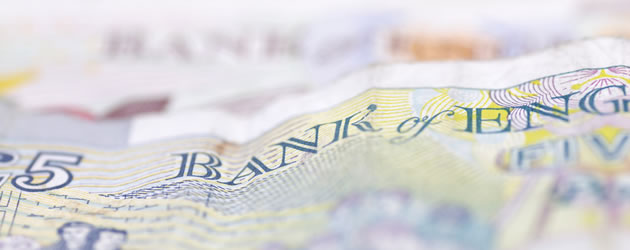 On Monday the Pound derived support from encouraging domestic manufacturing data and shook off the adverse impact of a dip in UK mortgage approvals.
On Monday the Pound derived support from encouraging domestic manufacturing data and shook off the adverse impact of a dip in UK mortgage approvals.
The asset was in a stronger position against the Euro and was holding steady against the US Dollar for much of the local session.
While US manufacturing figures had a slight impact on the GBP/USD pairing, Sterling was steady as trading began on Tuesday.
The Pound had softened against the Australian Dollar following the Reserve Bank of Australia’s rate decision but was able to extend gains against the Euro after the release of Nationwide house price data.
The report showed that house prices rose by 0.7 per cent on the month in May and were up 11.1 per cent on the year.
A monthly increase of 0.6 per cent was anticipated, and prices were expected to be up 10.9 per cent year-on-year.
Recently, indications that the UK’s overheating housing market is cooling have reduced the odds of the Bank of England increasing interest rates this year, so this sign of resilience was Pound-supportive.
As the day continued the UK’s Markit construction PMI was issued.
The gauge was forecast to have risen from 60.8 to 61.0 in May, but it actually dipped to 60.0 last month.
While house building remained the best performing sector, commercial work posted its most lacklustre increase for seven months.
Markit economist Tim Moore said this of the result; ‘Output growth hit a seven-month low in May, but the UK construction sector is enjoying its strongest overall phase of expansion since the summer of 2007 Residential building remains a key engine of growth […] The latest survey highlights that the construction sector is now experiencing its longest period of job creation for six years.’
However, the report also detailed indications of strain on capacity in May, including delayed delivery times and a fall in the availability of subcontractors.
After the report was published the Pound remained around 0.10 per cent stronger against the Euro and advanced by a modest 0.14 per cent on the US Dollar.
Today’s economic reports for the Eurozone could trigger considerable additional movement in the GBP/EUR pairing.
If either of the Eurozone’s inflation or employment reports disappoints expectations the Pound could storm higher against its European cousin.
Later today the US factory orders report could drive movement in the GBP/USD pairing. The data is expected to show a 0.5 per cent increase in factory orders in April. Orders were up 1.1 per cent in March.
Pound (GBP) Exchange Rates
[table width=”100%” colwidth=”50|50|50|50|50″ colalign=”left|left|left|left|left”]
Currency, ,Currency,Rate ,
Pound Sterling, ,US Dollar,1.6763,
,US Dollar,1.6763,
Pound Sterling, ,Euro,1.2328,
,Euro,1.2328,
Pound Sterling, ,Australian Dollar,1.8075,
,Australian Dollar,1.8075,
Pound Sterling, ,New Zealand Dollar,1.9779,
,New Zealand Dollar,1.9779,
US Dollar, ,Pound Sterling,0.5966,
,Pound Sterling,0.5966,
Euro, ,Pound Sterling,0.8110,
,Pound Sterling,0.8110,
Australian Dollar, ,Pound Sterling,0.5536,
,Pound Sterling,0.5536,
New Zealand Dollar, ,Pound Sterling,0.5056,
,Pound Sterling,0.5056,
[/table]

Comments are closed.